Veronica Knox's Blog, page 12
December 21, 2016
OUT OF FAIRNESS
Of course, I meant to say, ‘reborn free’ after a brief float in the harbor of desperate measures, and before embarking on a doomed journey on the library Titanic – the bookstore that shall not be named.
Please excuse a proliferation of mixed metaphors but jungles and oceans have a lot in common for indie publishers. We are often lost at sea and mired in jungle fever without a paddle. And now there are more rules and there aren’t enough lifeboats (I mean reviews) to save us.
OUT OF THE MOUTHS OF STORYTELLERS
We indie authors march to the same literary drum as those who are traditionally published but the machetes we use to slash through the undergrowth look an awful lot like a pen. Less is not more. The pen is not mightier than the dollar. We work hard against an increasing tsunami of opposition making unnecessary waves. A few water-wings may save a few books if you know how to play the game that the big-game hunters play.
It seems wise to take a page ‘OUT OF’ another author’s book. And, if not an entire page, then a few snippets of dialogue based on the African memoirs of Baroness Karen von Blixen-Finecke, published under the pen name Isak Dinesen’s. It’s inspiring to hear a distant jungle drum with conversations of literary hope… and more power to the indies.
MY FAVORITE MOVIE ‘OUT OF AFRICA’ SPEAKS VOLUMES:
DENYS FINCH HATTON:
“Can you tell a story, then?”
KAREN BLIXEN:
“I happen to be rather good at stories.”
ME: “Of course you are and when you publish them you should get paid for that!”
DENYS FINCH HATTON:
“We should have a story now.”
KAREN BLIXEN:
Smiles
ME: “This is going to be good. The movie begins with strains of Mozart as if played under water and the visual hook of a tiny train in a vast expanse of the Serengeti plains, chugging into a story. I hear the poignant sound of an elephant trumpeting but that’s only in my imagination because I’m already there. I’m on the train. Out my window is a landscape that belongs to lions and giraffe and elephants. The female narrator delivers a moving voice-over as a soft Danish memory… the haunting phrase: I had a farm in Africa. I’m hooked. Then, the lilting poetry: “I had a farm in Africa. I had a farm in Africa at the foot of the Ngong Hills. I had a farm in Africa.” Her last plaintive refrain fades into a symphony. I LOVE this story.
KAREN BLIXEN:
“But I have gone ahead of my story. He’d have hated that. Denys loved to hear a story told well. You see, I had a farm in Africa at the foot of the Ngong Hills… I had a farm in Africa.”
And later:
DENYS FINCH HATTON – giving Karen a pen as payment for a story:
“We pay our storytellers here.”
KAREN BLIXEN:
“But my stories are free, and your present is much too dear.”
DENYS FINCH HATTON:
“Write them down sometime.”
ME: “Great idea, but writing stories ‘down’ is a lot harder than spilling beans around a safari campfire. It’s not a hobby. The written word requires a serous commitment of time, sometimes years.
A good writer must study the craft of writing. They must work on weekends and holidays. Focus is a big thing. One must experiment with subtext and familiarize themselves with the business of publishing. They must have a solid understanding of pacing and structure, story arcs and themes, plots and subplots, dialogue, and the subtle nuances of exposition and narration. They must create and invent and research. They must grapple with first person point of view vs. third, and tie up all the story questions in a satisfying conclusion that is neither stale, expected, nor lame. They must subject their manuscripts to harsh critics, revise, polish, and revise again. Not a hobby!
And if that’s not daunting enough, an indie author must hire a plethora of professional publishing services while dodging the predators who call themselves publishers but are really wolves in librarian’s clothing. Indies are advised, nay compelled to market and blog and schmooze when their first preference is to write their next book.
Did I mention out loud that WRITING A NOVEL IS NOT A HOBBY.
KAREN BLIXEN *speaking of her adopted Kenyan landscape of opportunity:
“Every time I try to tame it, it goes wild again.”
But if a writer isn’t fortunate enough to own a coffee plantation, or one that, like Karen Blixen’s, is being reabsorbed by an encroaching jungle, they must resort to investing in endless cups of high-priced lattes and espressos in expensive cafes where… (I knew I had a point to make) a single biscotti costs more than most e-books.
Novelists are urged, nay compelled to eat real food once-in-a-while, keep a roof over their heads, and pay all those editors and technicians and graphic designers who, quite deservedly, charge more per hour than the price of a single paperback edition. They eat ahead of us. And here the food chain takes a dangerous off-trail hike through book-eating territory.
Sometimes it feels like we indies are scavengers picking the bones of a gazelle after everyone else has feasted.
DENYS FINCH HATTON:
“We’re short a story or two.”
KAREN BLIXEN:
“Yes.”
ME: “Not any more. The jungle floor is littered with books. There’s no room to swing a lion cub in there. The bookshelves are miles long and reach the stars… which brings me to another set of sharp teeth. Reviews are sometimes harshly monitored (read deleted without just cause) and yet often, the worst and most obvious review offenders are taken at their word. Authors may not review each other. No reviews can be purchased with the exception of a few high-profile professional reviewing businesses that charge upwards of $500. As Woody, the ‘Toy Story’ cowboy often likes to shout out: somebody’s poisoned the water hole!
So, it would seem the ‘King of the Beasts’ even rules the stars
FYI:
TICKET TO A MOVIE BASED ON A NOVEL … $15
CELEBRITY E-BOOK, EDITED, GREAT READ … $15 and up
POPCORN AT THE MOVIES … $7
SOFT DRINK AT THE MOVIES … $5
CHOCOLATE BAR AT THE MOVIES … $4
DESIGNER COFFEE WITH EXTRA FOAM … $7
A SINGLE BISTRO BISCOTTI … $4
AVERAGE BUS FARE TO THE LIBRARY … $2.50
INDIE E-BOOK, EDITED, DESIGNED … FREE or 99 cents… FAIR TRADING?
All things being equal, and by the way, since NO BAOBABS HAD TO DIE, shouldn’t all e-books be priced ‘fair and square’?
For many Indie Joneses, falling into the trap of a permanent bargain-basement bookstore is as horrifying as a pit filled with snakes. It’s a last circle of hell that would even freak out Dante.
I REMAIN ‘OUT OF ANSWERS’:
What e-book price is a fair sweet spot?
What artificial-sweeteners poison the water hole?
Must Indie authors be reduced to lion fodder in a skewed coliseum where the survival of the fittest books requires wishing on five burned-out stars?
I think Denys would have our backs.


November 19, 2016
WALK THIS WAY

Sometimes, to understand history, you must put yourself in another person’s shoes.
Walk with me…
Pretend for a moment that you are a master painter. You live in fifteenth-century Florence. It takes you over a year to complete a masterpiece. One particular portrait is more important than all the others. This one you tweak when the mood strikes. It will never be finished when you can add another layer of varnish to make it sing. It’s not only a new treatise on portraiture, it’s the likeness of your beloved sister. A sister who died not long after she posed with her hands just so, and her eyes meeting yours in a familiar return of affection.
She inspired you to greater heights, and so the likeness is not only a perfect representation of her true appearance but also her inner beauty. Her expression mirrors her sense of playfulness as much as the sadness she felt when she lost her only child. You’ve painted her life by capturing her very soul on a panel of poplar wood. And in your grief you turn to it. You speak to it the same way a photograph in a locket becomes greater than a treasure – a companion with whom you can share your triumphs. A compassionate face that looks back at you and smiles in celebration or empathy.
When you travel, the painting goes with you. When you set up a new home, it’s there displayed where you can see it. It’s not a formal shrine. It’s more like setting a place at the table for a loved one who is never coming home, begun as a gesture to ease your pain. And before too long it IS your sister. She IS home. You speak with her as if she were in the room, and others hear you.
But you are an eccentric man and revered for your unique abilities. What you do is humored and documented: ‘Leonardo carried one portrait with him everywhere and would not be parted from it’. You are Leonardo da Vinci. The portrait becomes celebrated and known the world over as ‘The Mona Lisa’- the iconic image of your sister, Lisabetta – the woman known as your half-sister Lisabetta Buti. But you know a secret. She is the second lovechild of your mother and Piero da Vinci. Your relationship is as close as twins born six years apart. You taught your kid sister how to paint. She taught you how to survive.
Later, your painting is the most famous face in the world but Lisabetta’s identity is gone. Your sister’s name is lost because you painted another Lisa, and somehow the two women have been mistakenly interchanged. The silk merchant’s wife’s portrait was lost long ago. And now your sister survives as an exquisite portrait, a single line in a forgotten census, and the legend of an old man who carried a portrait to his deathbed… and still, when you leave your body, you will not be parted from her.
Time passes in the otherworld. You can hear Lisa calling. She’s trapped by the very art that created her. You search the world over for five-hundred-years. She searches for you too… and at last you meet again through a chance encounter with an autistic boy visiting a museum. A boy who recognizes truths hidden in the open. He feels the magic of a special day – the five-hundredth anniversary of Lisabetta’s death. But it’s not by chance. Love such as yours never is.
And now ‘The Mona Lisa’ smiles more radiantly as her new journey begins.

A STORY TOLD IN THREE VOLUMES


October 11, 2016
The first cellular phone?

Tobias and the Angel
EVERYTHING OLD IS NEW AGAIN
I see an angel reading a text message.
This painting, Tobias and the Angel (c. 1467) from the studio of Andrea Verrocchio, is considered to contain three of the earliest instances of painting by Leonardo da Vinci’s hand, likely a teenager of fifteen in his early years of apprenticeship. His identifiable light touch is seen in the delicate curls of the dog’s fur and the wayward lock of hair on the boy’s forehead, and his exquisite attention to detail in the fish.
The Angel and Tobias is a composite studio painting by the master, Verrocchio and his assistants. The figures show the awkward anatomy of Verrocchio’s more angular sculptural style. Note his signature right-hand position of the extended crooked baby fingers of both figures.
From the mirror pose of the angel and the boy’s left hand, it appears that the fish may have originally been held by the angel.
Book one of my trilogy, Second Lisa, outlines Leonardo’s apprenticeship years and describes him painting the Tobias alongside Sandro Botticelli.
Leonardo was certainly a man ahead of his time!
October 9, 2016
THANKSGIVING MUSEUM

Peyton ‘2005 – October 6, 2016’
Museums house the collective dreams of the anthropologist in each of us. We humans celebrate a general curiosity and regard for antiquities. But most of all, we ‘exhibit’ an inherent need for ‘DESIDERATA (Latin for ‘DESIRED THINGS’). More energetic than the hushed hallowed halls of libraries, museums encourage conversation. And even though we share a desire for tactile reassurance, we can look but not touch. Objects under glass are beyond our reach. And so we reach elsewhere for living contact.
THE MIND IS A STOREHOUSE OF TREASURES
We’re a possessive species; we amass everything from sea glass and heart-shaped stones to the rare loves of our life. The most evolved of our species invite pets into their world. We especially revere cats and dogs.
But most of all we accumulate memories. And since humans are hardwired to remember ‘THE GOOD, THE BAD, AND THE UGLY’, we each become the custodian of an emotional hoard of personal ticking artifacts. We are the curators of our own inner museums. Glass houses with shutters and padlocked doors, closed to the public. We are prone to fear too many ‘things’. Death is one of the biggies.
“Do not distress yourself with dark imaginings.
Many fears are born of fatigue and loneliness.
Beyond a wholesome discipline,
be gentle with yourself.”
– DESIDERATA – by Max Ehrmann
When ‘things go wrong’, it’s tough to remember that last line. We live in a universe of dualities, so although Thanksgiving Day is set apart to highlight the GOOD, it also stirs up the SAD.
SNAPSHOTS HUNG IN A HEART GALLERY
My personal museum is a complex of white carpeted halls. My nostalgic exhibits include the usual emotional flags and fears that haunt everyone’s calendars. Thankfully, I also harbor a sea of favorites: being a mom, the season of Autumn, music from the sixties and seventies, cats, dogs, elephants, tigers, art, the sounds of Gregorian chanting… and rain.
The museum behind my eyes is filled with memories captured in neurons and pixels. Everything is filed and shelved and catalogued. The carpets are immaculate. I believe my muse, who hangs out there (after all it IS called a MUSEum) is a house-proud librarian.
THE GOOD TODAY
I’m especially thankful that Peyton came to stay. A gentle ‘lassie’ wearing white stockings, ears like velvet, and warm eyes that expressed her own thank-fullness of being cherished as part of our family.
Today it’s ‘pouring cats and dogs’, so I’m thankful for the comforting sounds of rain. And grateful for the commonplace life of rehearsed indoor tasks that thankfully ask little more of me than peripheral attention. I’m thankful for the companionship of felines at my feet, earl grey tea, and a blanket of ‘GOOD GRIEF’.
THE SAD TODAY
Peyton is gone. My thanks move seamlessly from the humane to the mundane – the compassionate dignified face of euthanasia, and a path over the uneven landscape of loss. The sad constancy of ongoing routines: the picking up of dropped threads, sorting, washing, cleaning, cooking, writing, and the task of putting an empty corner to rights that has more meaning now for its emptiness.
THE UGLY TODAY
The jagged morning after and uneven waves of mourning that return as mini aftershocks. Feeling disoriented. The sympathetic shadow of writer’s block accompanied by the never-ending chaotic stupidity of ‘Windows 10’. Work is flavorless. I’m more aware of how many cats and dogs are in desperate need of comfort and good homes. And sadly, the space Peyton left is as great as the space she once filled.
… but then I remember another stanza of Max Ehrmann’s DESIDERATA:
“With all its sham, drudgery, and broken dreams, it is still a beautiful world.”
That’s a tough one, Max. No doubt the universe is unfolding as it should but giving thanks for time with Peyton is the best memory I can rally this Thanksgiving weekend.


October 7, 2016
A TIMELY NOTE
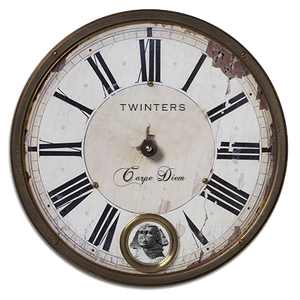 Readers from the U.S. and the U.K. may purchase ‘TWINTER-the first portal’ for 99 cents/pence from today until October 14th
Readers from the U.S. and the U.K. may purchase ‘TWINTER-the first portal’ for 99 cents/pence from today until October 14thCanadians may read it free on Kindle Unlimited.
The regular Kindle price will resume on October 15th for $7.99
to read an excerpt I invite you to visit> https://bedeseries.wordpress.com


October 6, 2016
TIME-SLIPPING AWAY
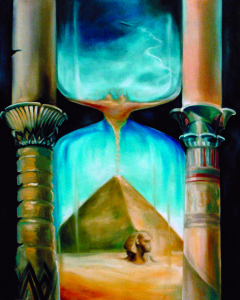
‘Time Temple’ – a painting by Veronica Knox
‘TWINTER’ GOES EXTRA
TIME-SENSITIVE
‘TWINTER – the first portal’ by V Knox, a new middle-grade TIME-SLIP MYSTERY will be a
99 cent Kindle TOMORROW from OCTOBER 7th -14th on:
http://www.amazon.com/dp/0993738044
Bede Hall has topiaries that wander about at night, a colony of trickster fairies, secret passages and time portals, and several resident ghosts. It rules over an eccentric group of twice-born villagers, a band of guardian animals, and controls the local weather… sometimes.
But even a grand three-hundred-year-old mansion can’t rest on its laurels. It must keep up with the changing times in order to vanquish the demons of its shady past and the developers who want to turn it into a hotel, herald the heroes of its glorious future, and save the planet from becoming a ball of blue ice orbiting the sun.


October 5, 2016
DEAR INDIANA JONES

Sunflowers – Vincent Van Gogh
IS IT EVER TOO LATE TO GET THE WORD OUT?
Think of poverty stricken Van Gogh – a posthumous billionaire. Is that the sound of an artist turning in his grave?
BOOKS OF FUTURE PAST
So here’s the scene: it’s the year 2116. Mr. Jones (anonymous book hound) stumbles across a copy of an old mildewed book. An obscure book by an unknown writer. Let’s call ‘her’ an ‘INDIE’ He begins to read. Thinks. Hmmn… this is pretty good. He checks the front cover and researches the name of the author and by some miracle a website survives. Ten other books hover there in suspended animation like time-travelers in cryogenic sleep. Aha! The literal discovery of a NEW WORLD… I mean NEW WORD.
Silence. The sound of crickets wafting from the ‘jungle’ so easily close over each new book like the vines choking the ruins of an ancient temple.
But that’s what the intrepid Mr. Jones discovers. A civilization of one. Me. An author who, inspired by the collective consciousness of the Lascaux artists, writes stories on the walls of my writing cave. And in the darkness, my stories may remain intact after a hundred years. Time snails on. No-one lasts forever but a digital book just might be immortal. Until that is, the meteor wipes out painted caves and art galleries and libraries.
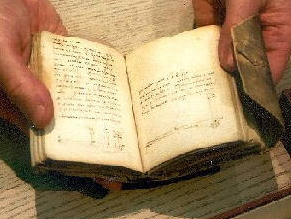
One of Leonardo’s ‘cameras’
Occasionally there is a lone survivor of a lost civilization. A missing link named Lucy. Or a lone human artifact. A Roman brooch that once-pinned-closed a cloak on a wanderer trudging across a green landscape. Or the archaeological fragments of a human planet like Leonardo. A lost da Vinci notebook. A recorded mind forever-mindful.
BETTER LATE THAN NEVER?
Dear Vincent. Your work was not in vain. You made it big. Your sunflowers are still a bestseller.
Sincerely, a friend.

Vincent painting sunflowers – Paul Gaugin


October 2, 2016
BEING ON TIME
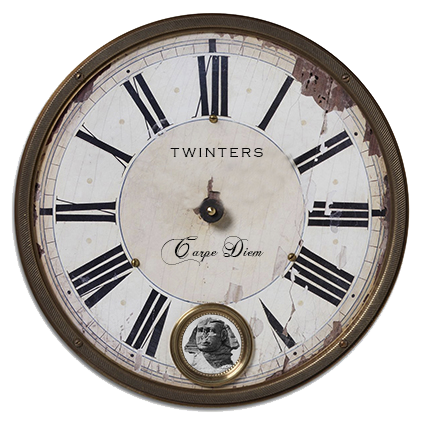
the Bede Clock from ‘Twinter the first portal’
HEART HISTORY & THE FINE ART
OF TIME TRAVEL
I
 ART
ARTMy historical research is a personal renaissance of time-slipping into the past and materializing –truly being there, here, and everywhere via the art of 360 degrees of travel, and twenty-twenty vision. Visualization in three-dimensions (and often a fourth) is an author’s prerogative and a legitimate form of creative reincarnation. The quantum time machine of imagination requires nothing but an armchair, a clock with no hands, a pen, and a sheet of paper. And a cup of tea is nice.
BEING THERE ON TIME
There is simply
no tidy way to time travel
and tell the tale in order.
Time is a spinning singularity –
A whorl of light
A vortex of emotional particles
the universe breathing out of control,
and we are but visitor shadows
– flying
Sentient-driven dreamers
working the updrafts
wind-taken, buffeted
– toe dipping
into once upon a time.
Now and then freefalling
awake
Spiraling through fragments of what was
– caught on the spires of an ancient temple
Suspended above the fumes of rebirth.
As curious passers by,
floating –
grasping at the random perfumes
of the past.
– Veronica Knox


October 1, 2016
CLOCKING THE PAST
SLIP SLIDING AWAY
So we beat on,
boats against the current,
borne back ceaselessly into the past.
– F. Scott Fitzgerald_______________________________

Psychic thirteen-year-old twins, the newest residents of Bede Hall, a haunted English stately home in the heart of Northumberland, must untangle the dilemma of its resident child ghost and engage the decidedly-strange villagers of nearby Bede to resolve an old score with an ancient Egyptian curse.
HANDS ACROSS THE SEA ‘TWINTER’ GOES TIME-SENSITIVE
‘TWINTER – the first portal’ – a new KINDLE middle-grade time-slip mystery will be 99 cents for one week from October 7th 14th EXCLUSIVELY on


September 9, 2016
WHAT’S IN A NAME?
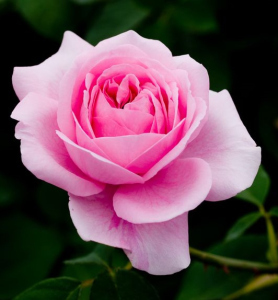
A TRUTH by any other name should smell as sweet
As an author I want to give my characters ideal names. They deserve the best. They deserve names that represent who they are at their core – a DNA signpost that stamps every human with a fingerprint like a unique snowflake amongst a sky of wannabes.
I faced a curious dilemma when my own name, Veronica, was perfect for the reincarnation of the ‘Mona Lisa’. Would readers assume the character Veronica Lyons was my alter-ego? By that, I mean, a more significant shadow of ‘I’ who naturally inhabits any characters who have incubated under my skin? Because, there is always a subliminal ghost of an author’s ‘self’ lurking between the lines of a story.
Unquestionably, the ‘Mona Lisa’ has one of the most recognized faces in the world. But the Lisa in my story, ‘SECOND LISA’ is on the warpath. She has been misidentified as the wife of a silk merchant. For five-hundred years she’s felt mortified, captured in spirit by her famous half-brother, Leonardo da Vinci, trapped inside the most famous portrait in the Louvre.
On the 500th anniversary of her death, Lisabetta Buti has a small window of opportunity to
SAVE FACE
The ‘MONA LISA’ has no intention of remaining anonymous but she needs an advocate to prove her true identity as Leonardo da Vinci’s sister. Who better than the reincarnation of herself, Veronica Lyons, a troubled single mother also in need of recognition and her autistic son who craves an identity in a world that dismisses him as flawed?
Is Lisabetta truly Leonardo’s half-sister? Or are they twins born five-years apart?
Genius and anonymity meet as allies in a story that gives ‘THE MONA LISA’ and her descendants a chance for well-deserved facelifts in the present century. A century that professes to celebrate the equality of every man, woman, and child’s potential greatness.
So, no, Veronica Lyons was not my fragile doppelganger, thinly-veiled, in need of attention.
And I simply couldn’t pass up her name because…
NO OTHER NAME SMELLED AS SWEET
The name ‘VERONICA’ is the English translation for the Latin veritas icona. ‘verity’ + ‘icon’ (iconic image) = the cryptic anagram,‘TRUE FACE’. In other words, a name hidden in the open, and no artist loved hiding clues in the open more than Leonardo.
What about the name of a fictitious street or town? Don’t they deserve a little creative camouflage?
When you’re an author you’re in charge. It’s an act of literary goodwill to bequeath your characters a magic cloaking device and the therapeutic means to overcome an IDENTITY CRISIS.
INSPIRING EXAMPLES from HARRY POTTER of NAMES with EXTRA MEANING:
LITTLE WHINGING > whinging means complaining with attitude
PROFESSOR ALBUS DUMBLEDORE > ‘dumbledore’ is an early modern English word for ‘bumblebee’. J.K. Rowling imagined him walking around incessantly humming to himself. ‘Albus’ is the Latin word for ‘white’ – a frequently used symbol for good which marks the character out as an enemy of the ‘dark lord’.
HAGRID > references the mythological term feeling haunted or ‘hag-ridden’ after a visitation from a witch in dreams.
“O! be some other name.
What’s in a name?
That which we call a rose
by any other name
would smell as sweet.”
–William Shakespeare
from ‘ROMEO & JULIET’
Have you found the ideal name for a character?
Have you used an anagram to hide a secret personality trait?
Have you created a name that resonates as clue?










